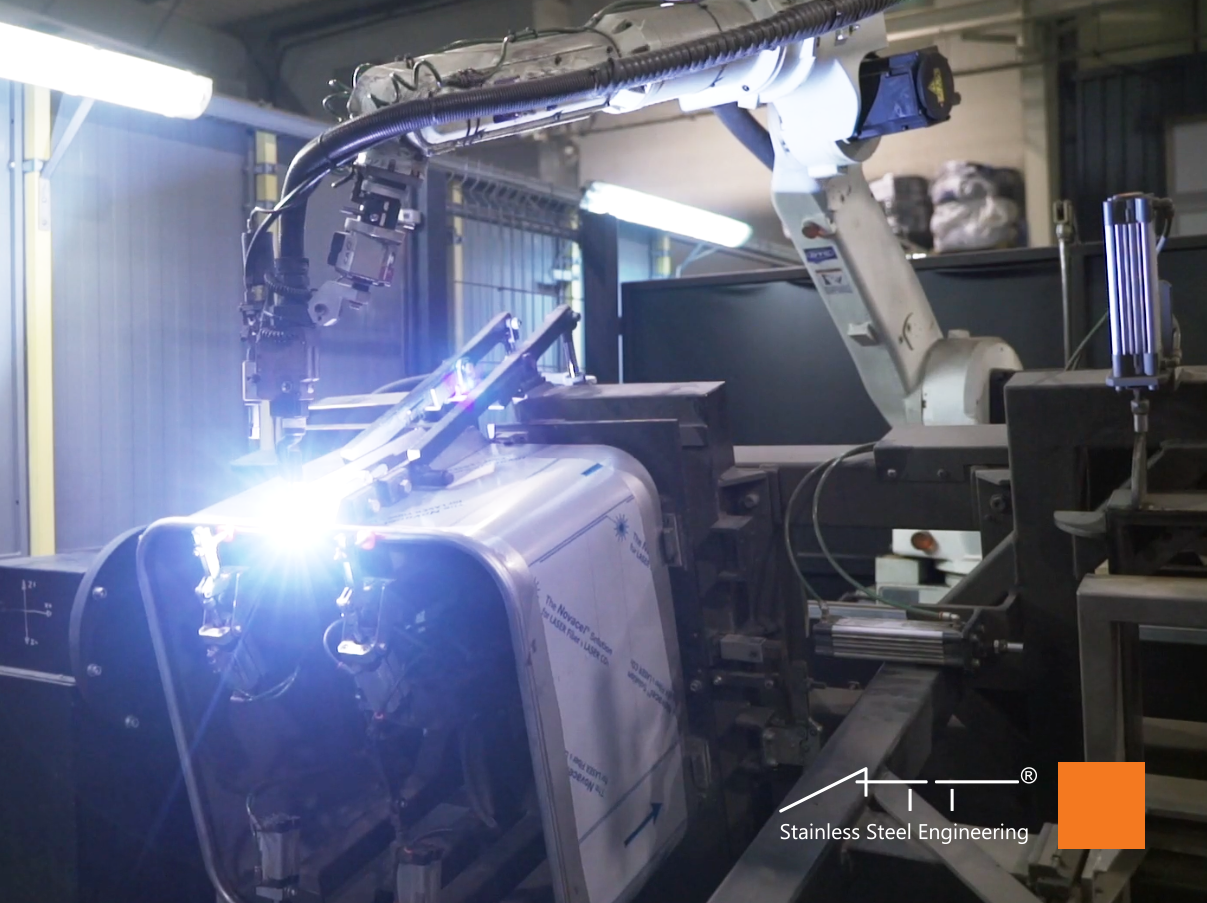
Michał Rabczuk
Manager of Factory Production Control (FPC) at ATT.
Graduated from Cracow University of Technology with a master’s degree in engineering and completed postgraduate studies in IWE welding supervision.
Quality assurance, certification and verification
At ATT, Quality Control and the inherent safety of products are not slogans, but an extremely important process that is present at numerous stages of the manufacturing process. Our task as the manufacturer is to ensure that every item that leaves the factory is of the highest quality and meets individual requirements of our customers.
Our reputation in the industry is certified by multiple periodic audits performed by independent third-parties such as TÜV Rheinland, Bureau Veritas, NSF, and IAMPO. Having developed appropriate procedures, we have implemented and maintained certification in accordance with ISO EN 1090 EXC-3 and 3834-2 standards since 2015, one of the most prestigious quality indicators for manufacturing and design of steel structures. The 1090 Execution Class-3 certification – Fabrication of steel and aluminum structures. Technical requirements for manufacturing – is the certificate of our ability to carry out complex engineering of steel structures, based on appropriate static calculations.
ISO 3834-2 and PN-EN 1090 Exc-3 certification, which is part of the European standard, is not only a confirmation of our welding competence, but above all testifies to our ability to carry out highly advanced and technically complex welding projects. As a result, welded structures are not only aesthetically pleasing, but above all safe and durable.
Competencies: IWE, VT2, RT2 and PT2
Equally important are the certificates of competence of our employees. IWE, VT2, RT2, PT2, and welding authorizations in their respective ranges proof top class qualifications for the tasks performed in the production process.

Photo: RT testing.
VT – Visual Testing – Level 2, is an advanced level of authorization to perform visual inspection of welds. The examination allows us to accurately detect and evaluate any surface defects in our products.
RT testing – Radiographic Testing, enable advanced radiographic testing to confirm the highest quality of fabricated welded joints throughout.
PT testing – is the oldest non-destructive testing method among all testing techniques. Even the smallest joints discontinuities are detected by PT testing. It is a non-pressurized method, using the phenomenon of hairiness that allows penetrant to penetrate into very narrow spaces, also against the gravity. This is a very effective and versatile method of weld integrity and hygiene testing.
The above-mentioned tests in combination with the guidelines of European Hygienic Engineering & Design Group – www.ehedg.org, enable our products to achieve top hygienic and food safety standards.
Quality Assurance Processes
As Head of Factory Production Control at ATT, I am responsible for creation and supervision of the Quality Management System. The key to the successful implementation of the Integrated Management System is the firm and consistent commitment of the company’s top management. ATT presents that strategical approach. Examples of processes affecting product quality assurance:
a. Approved Materials and verification of subcontractors: Every material we use must have the appropriate inspection certificate 3.1. Suppliers of materials are reputable stainless steel companies. We make every effort to ensure that raw materials we use meet the highest quality standards. Each time, we make sure that the materials correspond to the needs of our projects.
b. Type of Material Processing: ATT’s machinery park is technologically advanced and largely automated. As a result, processing methods and production capabilities are always tailored to the specifics of the material and project specification.
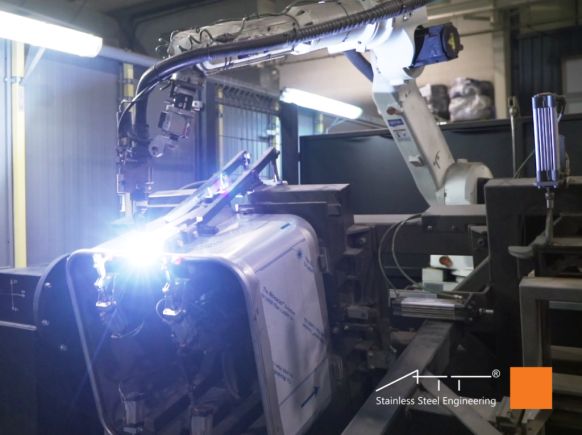
c. Conformity of Performance: After various stages of production, the manufactured components are checked according to inspection and testing plans. This allows us to constantly monitor the compliance of workmanship with technical requirements and ensure that each product meets expectations.
d. Welding Processes: Preparation for welding and the process itself are carried out in accordance with WPS instructions, which are created on the basis of WPQR’s retrained technology. This ensures that each welded joint is made with the utmost care and accuracy. WPS (Welding Procedure Specification) describes in detail the welding procedure, including the method, materials, and parameters to be used in a specific welded joint. On the other hand, the WPQR (Welding Procedure Qualification Record) is a developed technology that verifies and confirms that a particular welding procedure (as described in the pWPS document) has been tested and meets certain strength and quality standards. This is confirmed by the results of destructive DT and non-destructive NDT tests on welded joint samples, conducted in the laboratory environment.
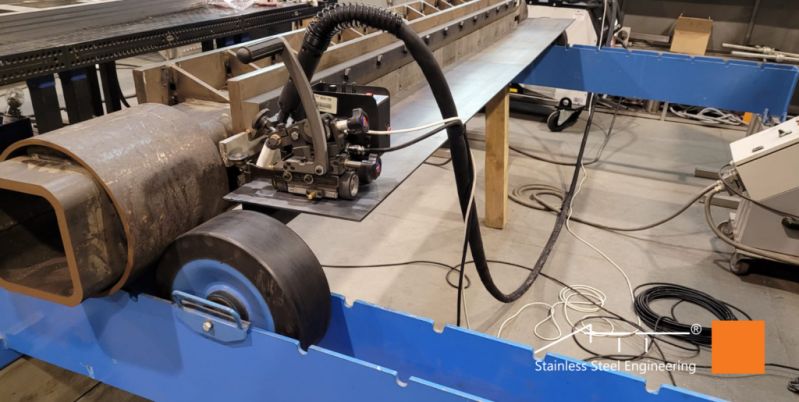
Going a step further, based on our experience and engineering expertise, we also create specialized welding jigs tailored to the production of individual structures. As a result, we are able to offer our customers unique solutions that perfectly meet their specific needs and requirements.
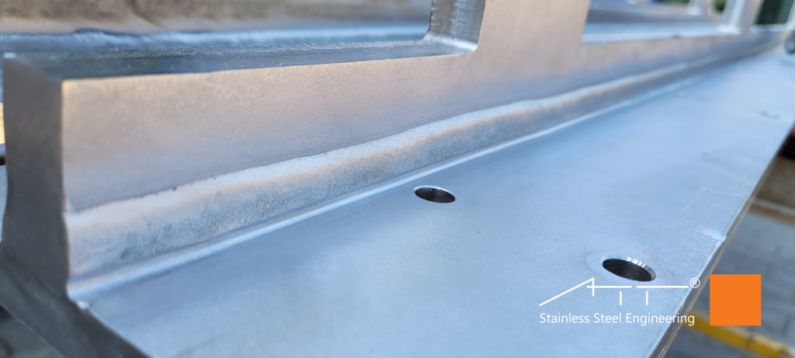
Photo: weld with full remelting ,,K” sheet 15 mm Duplex steel 1.4462.
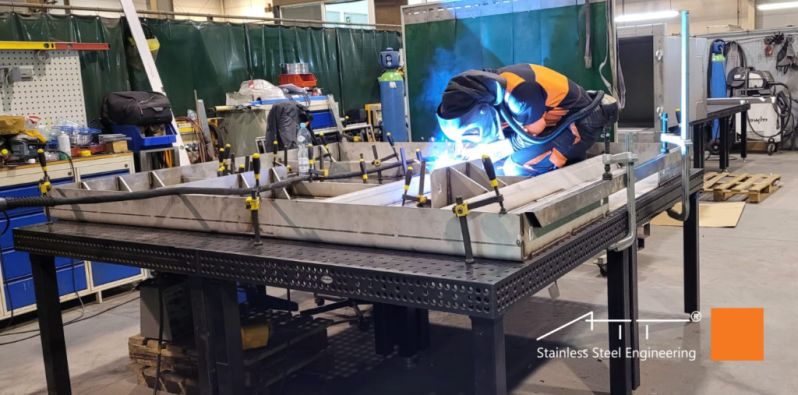
e. Pickling and Passivation Processes: At the end of the production process, the components are subject to the pickling and passivation process. These steps are essential to ensure the long-term resistance and aesthetics of our products.
f. Quality Control of the Finished Product: At the finals stage we conduct a detailed, critical quality control of the finished product. This is an important stage that ensures that goods meet all required standards.
Before the product is shipped to the customer, final quality verification is carried out in accordance with the inspection and testing plan. Documentation is produced after each of above mentioned stages. This demonstrates our commitment to the highest standards and transparency in our operations.


 Następny
Następny
